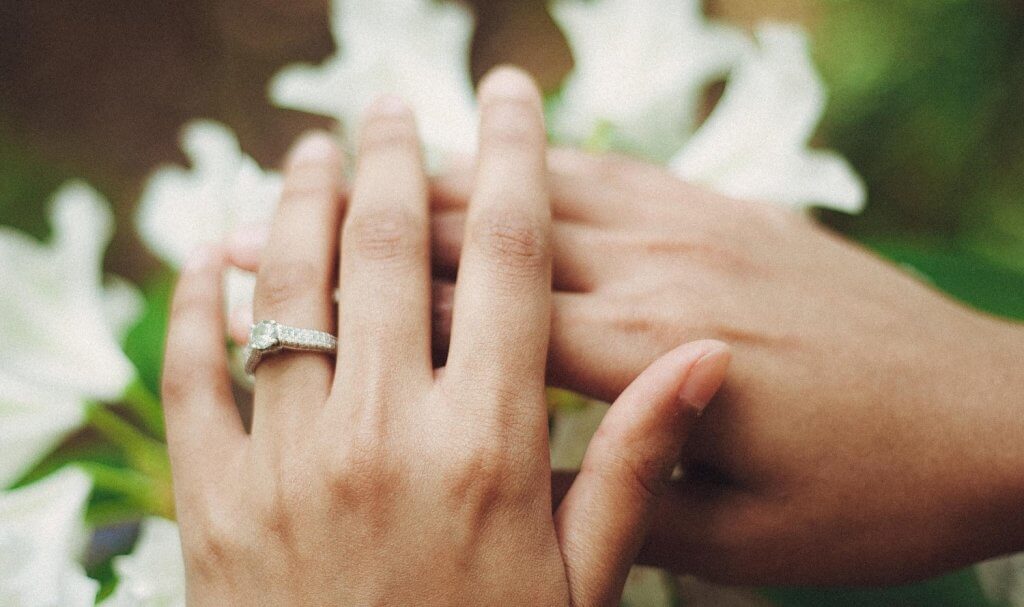A Beginner’s Guide to Solitaire Diamond Setting
Key Takeaways
- The Cathedral setting is one of the most elegant and versatile options, whether you’re looking to create a simple solitaire with a little extra panache to it, or a more ornate ring.
- It can create the perfect amount of space beneath the center diamond to add in a hidden halo, or simply be used to elevate the diamond and make it stand out more against the finger, and the wearer’s other rings.
- It’s a great way to incorporate more detail in the ring without relying on accent stones, if your partner would prefer to keep things simpler and more ‘toned down’.
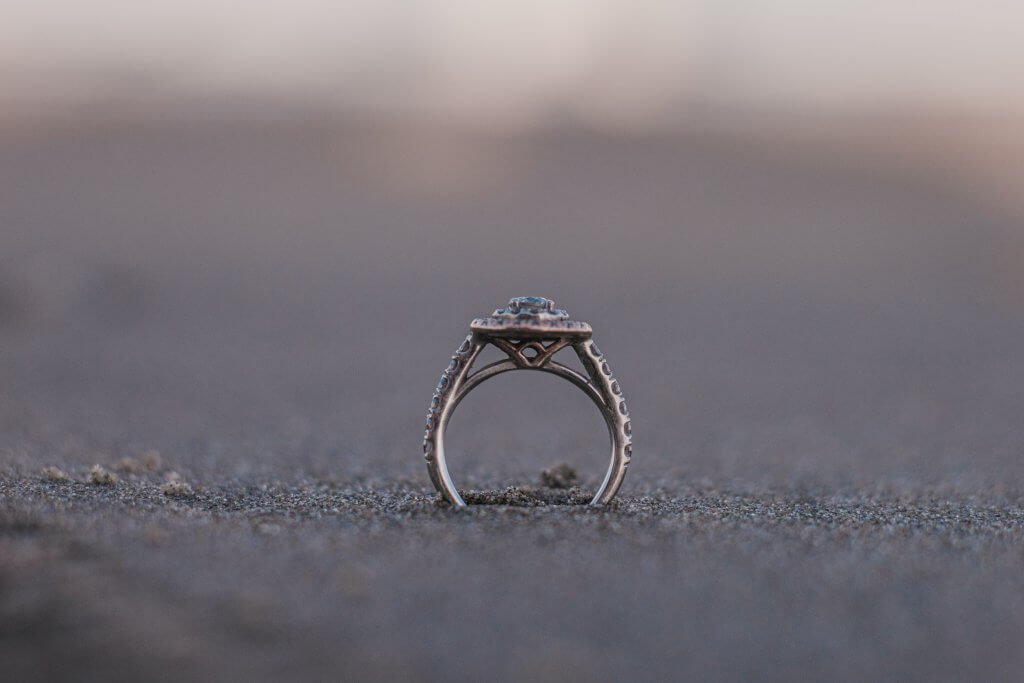
Elegance is definitely one of those traits that lies in the eye of the beholder. For some, it is found in intricate details and ornate finishing touches; for others, it lies in shape – long, clean lines that are as functional as they are beautiful, and as visually simplistic as they are complex to create.
The world is full of elegant ring designs but, if you’re a fan of those refined shapes, very few of them can compare with the bold, architectural lines offered by cathedral setting engagement rings. Strong, graceful, and highly versatile, this setting option remains among the most popular out there – and for good reason.
Whether you feel drawn to the structural beauty of this style, or simply want to give your diamond more height and prominence over the wearer’s finger, you should already be considering the cathedral setting a strong contender – wherever you are in your journey to find the perfect ring for her.
What is a Cathedral Engagement Ring Setting?
While each cathedral setting will look a little different, this design is characterized by a pair of elegant, vaulted metal supports – like cathedral archways – on either side of the center stone.
These arches rise above the shank (band), giving more support to the diamond at its center, and a grander form that raises the ring higher above the finger, and makes the underside of the diamond more visible.
It also gives the jeweler more opportunity to give the ring’s profile (visible from the sides, rather than above) more detail. The added space between the diamond and the shank can be used to create intricate shapes with metal, or to add an additional ‘hidden’ diamond that sits beneath the center setting, and is visible only from the profile.
For this reason, many cathedral settings are also characterized by a distinctive ‘basket’ shape beneath the diamond, where the prong settings reach down and connect with the shank.
As a result, the cathedral setting creates a ring that boasts a unique appearance from every angle, and a standout status on any hand.
What are the Different Types of Cathedral Ring Setting?
Cathedral settings can be combined with four prong or six prong settings, a bezel setting, or (much more rarely) a tension setting to hold the diamond in place.
On its own, the phrase ‘cathedral setting’ refers only to the vaulted lines that raise the central setting (containing the diamond) above the shank. The part of the ring that is used to hold the diamond in place is a separate feature.
This is useful to know if you want to talk to your jeweler about cathedral settings, as you’ll still need to pick any other aspects separately.
The cathedral setting is highly versatile, and can be used with many other design features. The halo, split shank, and pavé settings all combine wonderfully with these arches, and allow for plenty of personalization as you work with your jeweler.
Does a Cathedral Setting Make a Diamond Look Bigger?
They can do. Since they are high-set (or, in other words, elevated much higher above the shank) they can trick the eye into seeing more diamond than there really is, particularly when the ring is viewed from above.
A cathedral setting won’t work wonders, but it will certainly make the most of a stone slightly smaller than you might have originally hoped for. For a center diamond, we’d still recommend going not much lower in weight than one carat.
Not only does the higher setting bring it closer to the eye when worn on the finger, but jewelers can also complement the side profile of the diamond by exposing more of it – again, making it look bigger. And that’s not all…
Do Cathedral Settings Block Light?
Not necessarily. In fact, they can allow more light to reach the diamond by elevating the lower portion of the diamond (known as the pavilion) above the shank, provided any intricate features along the ring’s profile do not cause too much interruption.
The amount of light entering a diamond also depends on the type of setting used to secure it in place. For instance, a four prong cathedral setting will leave more of the diamond exposed than a six prong cathedral or bezel cathedral setting.
Why is this so important to know? Because a diamond’s ability to sparkle is entirely dependent on the amount of light entering (and leaving) it. The more diamond jewelers are able to leave exposed (without, of course, risking the safety of the diamond during wear) the more sparkle we will get.
So, the longer answer to this question is this: like any ring setting, all cathedral setting styles will inevitably block some of the light from entering your diamond, but some will actually grant your diamond more access to light sources than other settings and cathedral styles.
The only way to judge for yourself whether the cathedral setting changes the appearance of a diamond is to ask your jeweler to show you examples during your consultation. It’s impossible to do justice to these subtle changes through pictures alone, so don’t make up your mind just yet. Any setting will disrupt a diamond’s sparkle to a certain extent, and it’s not the end of the world when it happens.
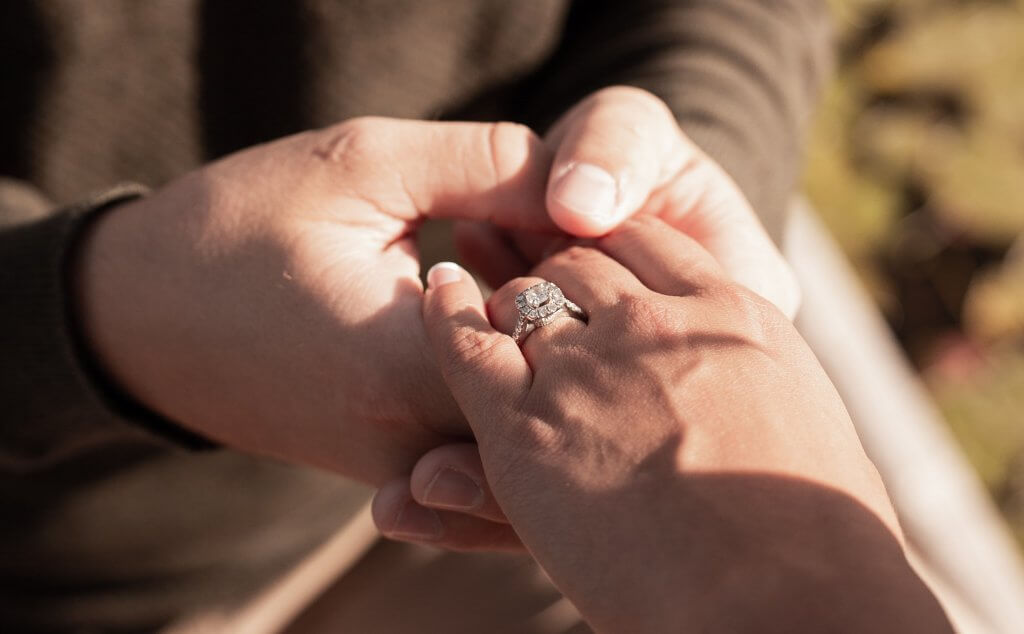
Are Cathedral Settings More Secure?
Cathedral settings are secure, particularly when they’re created by an expert jeweler capable of achieving the strongest design possible without obscuring too much of the diamond. This does depend on the type of cathedral setting you choose, however, and it is important to note that they can be more vulnerable to damage than some other ring settings.
Since cathedral settings can be combined with any number of prongs necessary to hold that diamond in place – or, safer still, the bezel – you can rest assured that the diamond is not going to work loose any time soon.
One thing to keep in mind, however, is the fact that the diamond is far more prominent in this setting. It’s not hard to imagine it snagging on her clothes, getting caught in the straps of her handbag, or knocking against hard surfaces on the regular, no matter how careful she is.
Rings are built to withstand the ups and downs of daily wear, and diamonds are infamously tough, but that doesn’t mean they’re invulnerable. While it’s not going to fall apart in next to no time, it may need a little extra care – not to mention her knitwear, which is likely to sustain more of the damage than the ring itself.
During your consultation, it’s likely your jeweler will recommend that you return twice a year for a quick check-over, just to make sure that none of the prongs (if you’ve picked them) are working themselves loose. It may seem a little excessive, but it’s better than looking down one day to find that $5,000 diamond missing.
One thing to note, however, is that this design is unlikely to prove wearable for those with active jobs or lifestyles. However, the case is the same for most engagement rings, which might be better left at home during the working day, except for some of the very secure styles such as the flush setting engagement ring, or a lower set bezel.
Are Cathedral Settings More Expensive?
Not necessarily. In fact, they can be a highly cost-effective way of adding that little ‘something extra’ to a solitaire diamond ring without feeling like you have to go all out on accent diamonds and intricate features.
Of course, the potential cost of any well-made diamond ring will range from a few thousand to hundreds of thousands of dollars, depending on the buyer’s specifications, so it’s impossible to say that one particular style or setting is more expensive than another.
In other words, you can make what you want out of this style. The cathedral setting can speak for itself, and add a special, elegant quality without any additional adornment – or, alternatively, it can be paired with a number of additional design features for a truly sumptuous and sparkling design.
The best way to make it fit your budget? Do your own research, then follow through with our local jewelry store locator to find an expert in your area, capable of working with you to create the perfect piece.
What are the Best Diamond Shapes for the Cathedral Setting?
The cathedral setting is versatile enough to work with any diamond cut, although, if sparkle is what you’re looking for, we’d recommend round or fancy cuts in order to achieve the maximum number of facets.
We’ve talked before about how more facets means more sparkle – and, of course, how more light-exposure achieves the same result. So, if those dazzling white and colored flashes of light are at the forefront of your mind, look at round cut four prong cathedral setting engagement rings – or a princess cut, if you’d prefer a more modern look.
Still, that’s not to say you should be ruling out the step cut diamonds. The emerald and asscher cuts, for instance, won’t sparkle like a many-faceted round cut, but they will find their fullest potential in the lofty cathedral setting. Those long, bright flashes are all the more obvious.
If nothing else, this setting ensures that the diamond stands out more than any other part of the ring. If you and your bride-to-be are big fans of the emerald cut, then the cathedral setting will not only elevate it high above the shank, but will also allow that unique light performance found only in step cuts to reach its fullest potential.
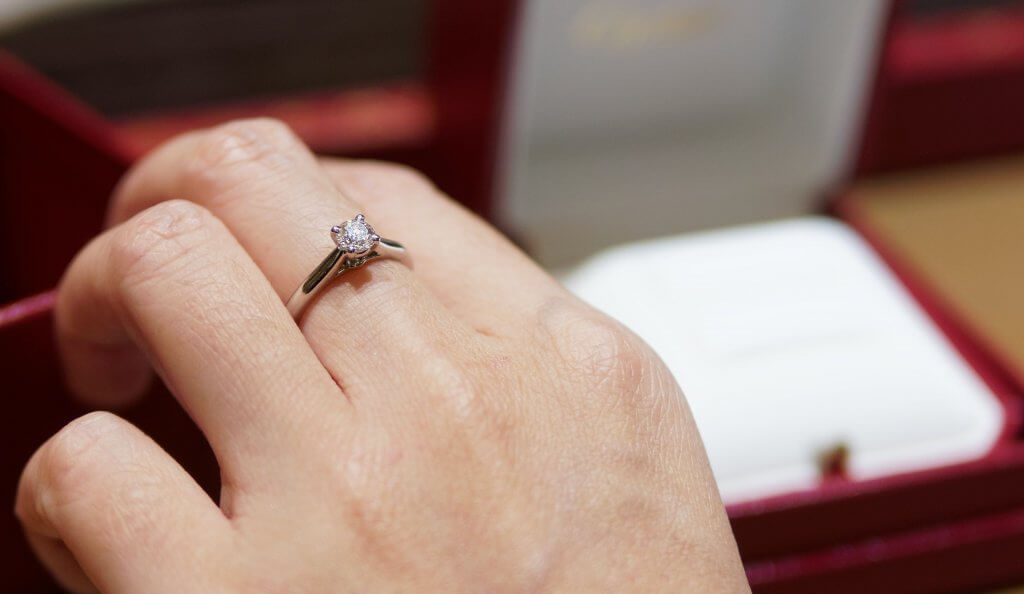
Is the Cathedral Setting Popular?
Yes, and for many different reasons. Not only can they be used to give the more traditional solitaire diamond ring an elegant enhancement, but they can also be used to create entirely new designs altogether.
Some settings, such as the tension setting, are distinctly modern. Others, such as the unadorned solitaire, are much more traditional. The cathedral setting balances itself halfway between the two, offering buyers the opportunity to embrace sleek minimalism or vintage opulence in the design.
In other words, while distinctive, the cathedral setting has no specific appearance. It offers a shape – a beautiful structure which can be left ‘as is’, or decorated, depending on the style and specifications of its intended wearer. The arches may sweep high above the finger, or remain relatively low; they may split, or remain whole; they may be decorated with pavé or channel set accent stones, or gleam in plain gold or platinum.
This reason alone means it will always represent an incredibly popular choice. You could spend your entire consultation with your jeweler talking about this setting alone, and still not exhaust the possibilities offered by it – particularly at the hands of an expert craftsman.
Are Cathedral Settings Comfortable to Wear?
Yes! As the shank still wraps comfortably around the entire circumference of the finger, it will feel like wearing any other ring.
While those impressive, cathedral-inspired arches will doubtless draw the eye, you don’t need to worry that wearing this ring will feel like putting a round peg into a square hole. The ring’s shank remains the same (though it may be hidden from view by the cathedral setting) which means that the wearer’s finger is still accommodated perfectly within it.
As with any ring, however, comfort is primarily derived from fit. The wrong ring size will mean that she’ll spend a lot of time pushing that diamond back to the top of her finger – or that it won’t go past her knuckle at all. That is, until you get around to having it resized…
Can Cathedral Set Rings be Resized?
In general, yes – although, as always, it will require the skills and expertise of your jeweler, since resizing any diamond ring takes a lot of precision.
We will always recommend returning to the same jeweler who created or sold you the ring in the first place, as by then you will already know and trust their work. It’s never worth sending your ring for resizing via an online-only service.
Some design features, such as channel set diamonds or tension settings, can make the process of resizing a ring much more complicated, so don’t underestimate the importance of getting that size right the first time around.
Is a Cathedral Setting Better?
It’s a solid choice offering many great opportunities for customization – or just to keep things simple. Still, the wearer will have to take care of it, since it’s a little less ‘aerodynamic’ than other rings.
No engagement ring style is objectively better than another but, in terms of versatility, elegance and beauty, the cathedral setting certainly ranks high on our shortlist.
Compared with a solitaire diamond, the cathedral adds a little extra height and sophistication to the design without detracting from the elegance and simplicity of the original. You don’t have to sacrifice on any other features to make it work, either, so opting for this design won’t be overly restrictive during the design process.
If you want to make a real splash with your proposal, and put a ring on her finger that’ll tower over her other jewelry without sacrificing on elegance or that classic diamond engagement ring shape, this is certainly a strong contender.
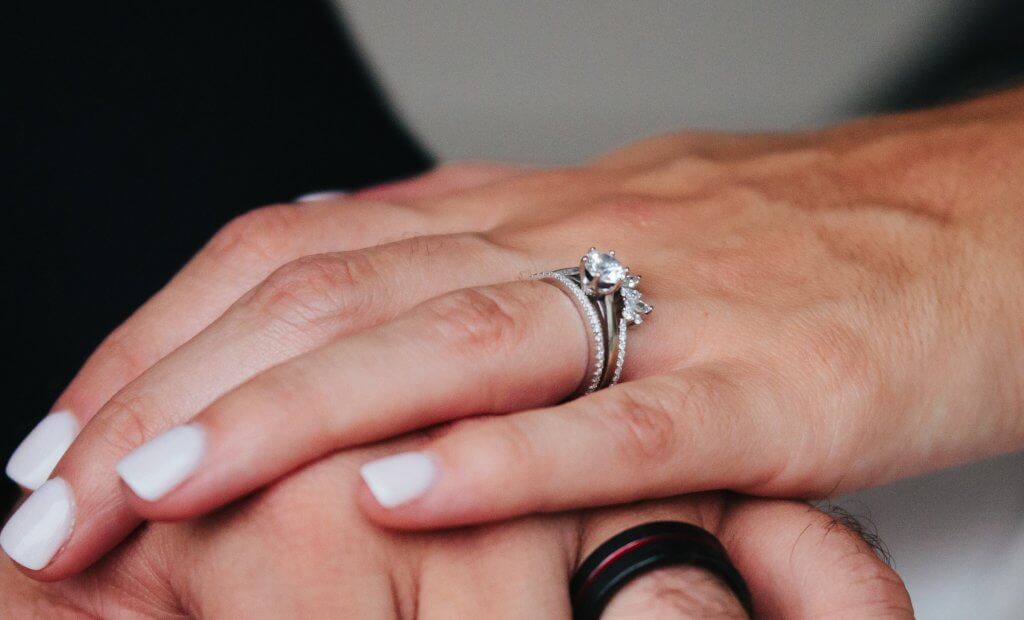
So, Should You Pick a Cathedral Setting?
This is one of those classic, versatile shapes that, in our opinion, is worthy of consideration for any engagement ring buyer.
The main takeaway from this article is the fact that the cathedral setting lends itself to any style of engagement ring you can imagine. Whether you’re leaning towards the more classic designs, or something modern – like an unadorned platinum tension setting – there is likely to be a way of incorporating those distinctive, sweeping arches into the design.
Complementary to any finger shape, comfortable to wear, and, of course, dazzlingly beautiful, the cathedral setting is an excellent choice, whatever your style. Take a look around our site to get a good idea of what you like, then work with your jeweler to bring that vague concept into fruition.
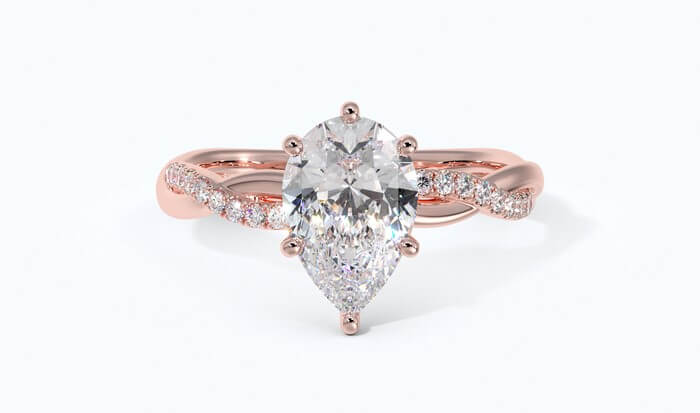
Mar 17, 2022 By Willyou.net
Pear Shaped Diamond Ring Settings: The Complete Guide
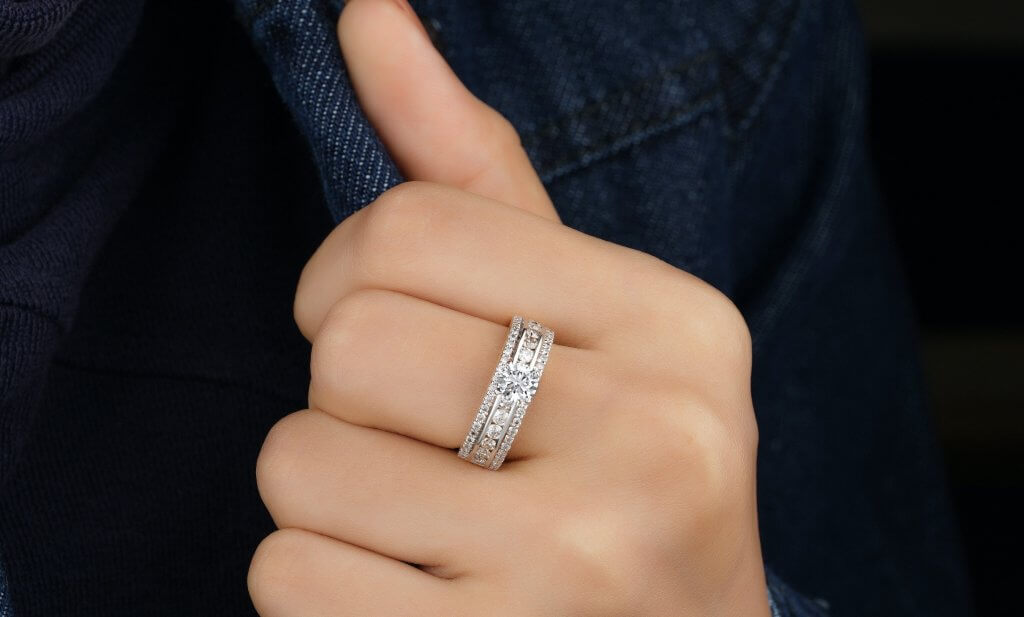
Mar 12, 2022 By Willyou.net
Channel Settings: The Complete Guide
